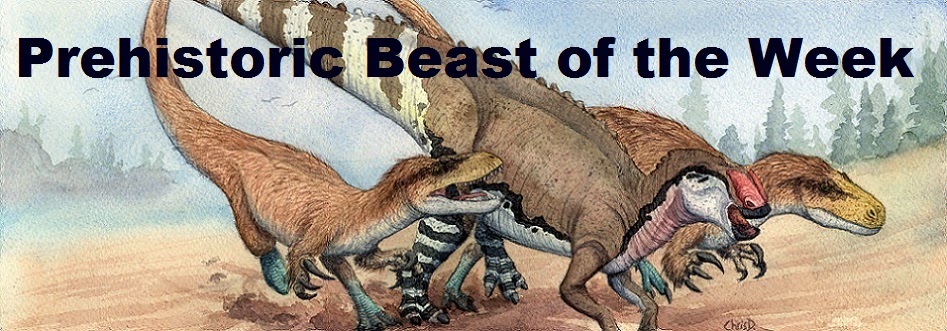.jpg) |
| Watercolor life reconstruction of Miragaia by Christopher DiPiazza. |
Long necks are nothing new or unusual for dinosaurs. Sauropods, being the most famous for having them, as well as many theropods, including lots of living birds! Miragaia, however, was none of those things. Miragaia was a stegosaurid, a close relative to the more famous, Stegosaurus. Among stegosaurids, Miragaia had a noticeably long neck, which consisted of seventeen vertebrae. Stegosaurids in general tended to have relatively long-ish necks, consisting of between nine and thirteen vertebrae (depending on the species) possibly to help them access as much low-growing vegetation as possible without having to move their bodies while feeding. The specific reason why Miragaia's neck was as long as it was is still somewhat of a mystery. What's even more interesting is the fact that since it lived during the late Jurassic, Miragaia was coexisting with sauropods, which also had extremely long necks. Perhaps it was evolving to compete with its sauropod neighbors? Keep in mind, despite a quadruped, Miragaia was probably able to rear up on its hind legs for short periods of time, perhaps to reach higher vegetation while feeding. This is because its center of gravity would have been in its hips, making its front end much lighter. Maybe its neck allowed it to feed in a space just below the larger sauropods, but beyond other stegosaurids? We may never know for certain.
Miragaia is an interesting find because it was not discovered by paleontologists looking for fossils. Its remains were found on accident by construction workers, while building a road. Because of this, only the front half of Miragaia's skeleton was initially found, the back part unknowingly may have been destroyed during the construction. Years later a stegosaur, currently called Alcovasaurus but possibly a different species of Miragaia, was published on, which included elements of the back half of the body, including long spikes that would have been on the tail.
There are a number of interesting things to note about this Miragaia other than the neck. Part of Miragaia's skull was preserved, including the beak. Miragaia's beak was relatively small, but flared out slightly on either side, making an almost upside-down heart shape. This beak was likely ideal for clipping vegetation to be processed by the small teeth farther back in the mouth.
 |
| Photograph of most of Miragaia's bones that are on the fossil record. Photo credit: Dr. Mateus. |
Miragaia had bony plates on its back, just like all known stegosaurids. These plates (at least the ones that were found) were relatively small, and were arranged in pairs. The plates may have been for display between members of the species. They also might have had a role in temperature regulation or even could have helped with camouflage by obscuring the animal's profile, depending on what kind of environment it was in. Many living reptiles have similar adaptations today, like spines and sails for those purposes. Stegosaurids are also known for having spikes, usually, but not limited to the tail. Two spikes were unearthed in association with a possible Miragaia specimen, suggesting it may have had an arrangement similar to that of its relative, Kentrosaurus, with the front half of its back adorned with plates that turn into long spikes around the hips and continue to the tip of the tail. These spikes were extremely long and would have been potentially deadly defensive weapons against potential predators, like Allosaurus or Torvosaurus.
That is all for this week! As always feel free to comment below or on our facebook page!
References
Costa, Francisco; Mateus, Octávio (13 November 2019). "Dacentrurine stegosaurs (Dinosauria): A new specimen of Miragaia longicollum from the Late Jurassic of Portugal resolves taxonomical validity and shows the occurrence of the clade in North America". PLOS ONE. 14 (11): e0224263.
Mateus, O.;
Maidment, S. C.R.; Christiansen, N. A. (2009). "A new long-necked
'sauropod-mimic' stegosaur and the evolution of the plated dinosaurs". Proceedings of the Royal Society B: Biological Sciences. 276 (1663): 1815–21.
Waskow, Katja; Mateus, Octavio (2017). "Dorsal rib histology of dinosaurs and a crocodylomorph from western Portugal: Skeletochronological implications on age determination and life history traits". Comptes Rendus Palevol.
Waskow, Katja; Mateus, Octavio (2017). "Dorsal rib histology of dinosaurs and a crocodylomorph from western Portugal: Skeletochronological implications on age determination and life history traits". Comptes Rendus Palevol.

No comments:
Post a Comment